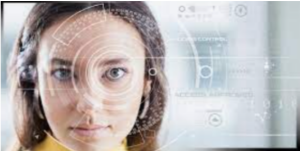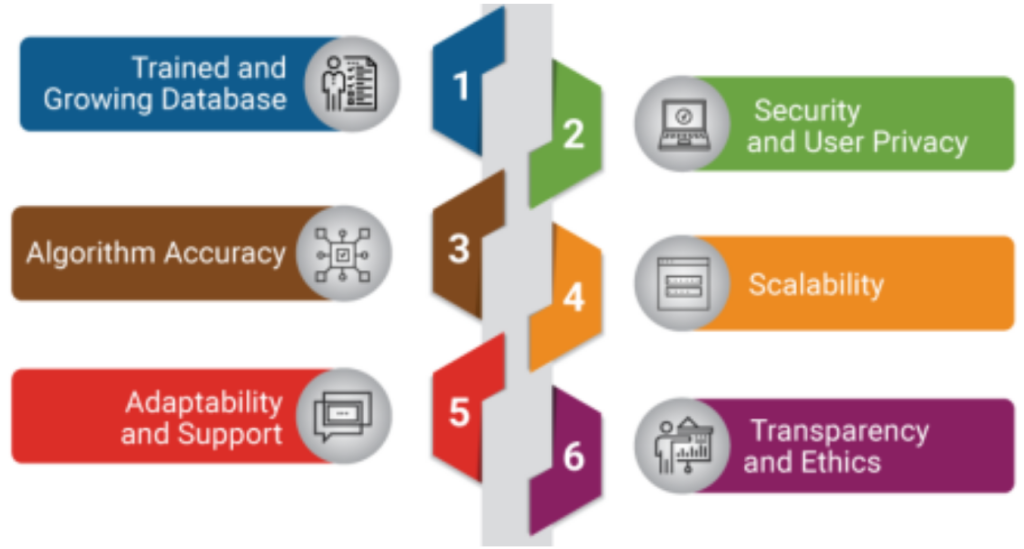Facial Dilemma
Mohamed Sondo | June 26, 2022
Facial recognition is undoubtedly one of the most fascinating technological ventures in the world today.

A facial recognition system is simply a technology that can match a given face from a digital image against a database consisting of numerous faces. The technology is primarily used to authenticate users through ID verification services and to measure facial features from an image.
The most common facial recognition technology used across the world includes the auto photo tagging feature on Facebook and google photos. Others include Amazon Rekognition, Betaface (which Focuses on image and video analysis, face and objection recognition), BioID, Cognitec, DeepVision AI, Face ++, Kairos, and Sky Biometry [1]. The list is endless. Someone would start wondering, How does a software start recognizing human faces? What features or components make the software recognize an individual’s face?
Here is a quick glimpse at the components and the features that make the software work effectively.
- Hardware: used for capturing the images
- Intelligence: For comparing the captured faces with the existing data
- Database: An existing collection of identities.
Key Must-Have Features of a Facial Recognition Software

So how does that FRS work, and who uses the software? Here is a brief overview of how it works. The first step is the detection of the fed image. Detection involves extracting the face from the provided image [1]. This process aims to have the face print, which is always unique to every human being. The faceprint is generated in the form of a code which is then passed onto
the next stage, matching. At this stage, the faceprint is matched with the other prints stored in the system by taking the image through different technological layers to ensure accuracy. The algorithms, in this case, consider several factors, including facial expressions, lighting, and image angles, when discerning the perfect match [2]. The third step involves identification, whose goal is dependent on what the particular FRS is used for. The end result from this stage should be a 1:1 match of the subject. Intelligence services and different companies such as Mastercard, hospitality sector, Airports, banking halls, and mobile commerce-oriented companies use facial recognition software.
Step-by-step representation of the automated face recognition system.

What are the Ethical Issues of Using Facial Recognition Technology? Critics have recently questioned the facial recognition system’s accuracy and role in identity fraud. There are cases where law enforcement agencies implicate innocent individuals over facial recognition leads [2]. The most cited ethical concerns include racial bias, discrimination, privacy, data breaches, mass surveillance, and lack of transparency. Have you heard or experienced any of these? Here is an overview of each.
Data Privacy
Remember in 2020 when the European Commission banned facial recognition technology in public spaces to include guidelines on privacy? Data privacy is one of the general public concerns. Facial recognition violates the public’s inherent right to remain under constant government surveillance. Data integrity is only guaranteed through proper encryption to avoid security vulnerabilities.
Racial Bias and Discrimination
The racial bias remains one of the primary concerns over facial recognition systems. Some cases and worries have recently emerged over the developments that challenge the ethics of facial recognition. Recent statistics by the National Institute of Standards and Technology indicated that facial recognition technologies for more than 180 algorithms indicated a racial bias towards women of color [2]. It is so unfortunate that errors detected were more common on dark skinned faces than when matching their light-skinned counterparts.
Lack of Transparency
Facial recognition algorithms function well when tested over large datasets of images captured under different angles and using different lighting. These images are mainly sourced from online sites and illegitimate social media platforms. As a result, individuals’ images are obtained and used to evaluate and improve surveillance products without any informed consent and transparency.
Mass Surveillance
Facial recognition leads to mass surveillance, mainly with ubiquitous cameras and data analytics. This surveillance leads to compromising citizens’ fundamental privacy rights and liberty.
References
[1]Edison Paria, R. C., Juan G., & Jose G. (2017). An Improved Face Recognition Based on Illumination Normalization Techniques and Elastic Bunch Graph Matching. In Proceedings of the International Conference on Compute and Data Analysis (ICCDA ’17). Association for Computing Machinery, New York, NY, USA, 176–180. https://doi.org/10.1145/3093241.3093249
[2]Olszewska, J. I. (2016). Automated face recognition: Challenges and solutions. In (Ed.), Pattern Recognition – Analysis and Applications. IntechOpen. https://doi.org/10.5772/66013 https://www.intechopen.com/chapters/52911
